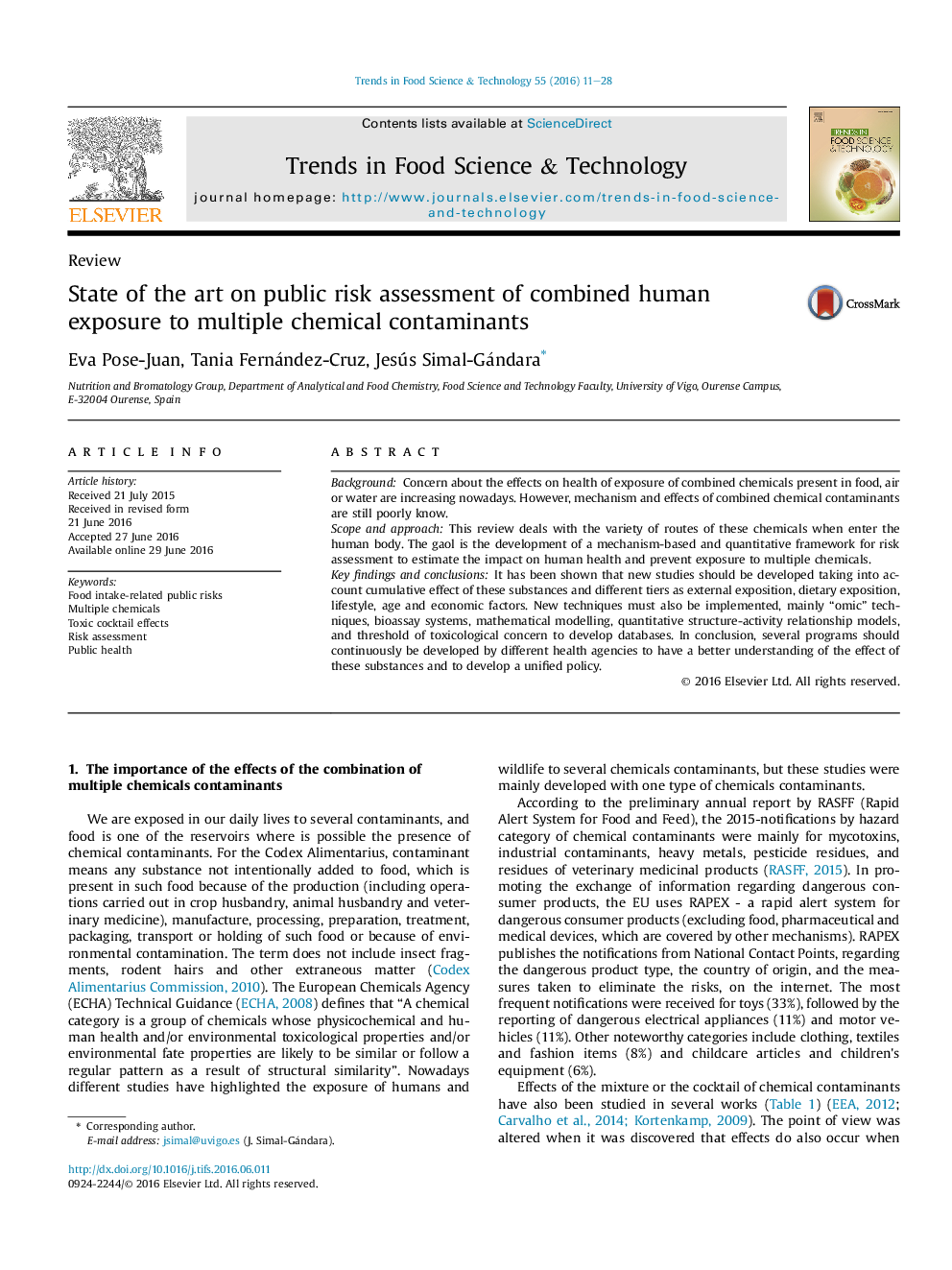| Article ID | Journal | Published Year | Pages | File Type |
|---|---|---|---|---|
| 2098475 | Trends in Food Science & Technology | 2016 | 18 Pages |
•Need to focus on identifying mixture interactions and the mechanisms involved.•Physiologically-based models can be used to predict the toxicokinetics of the mixture.•It is of paramount importance the role of different families of detoxification enzymes.•Omic technologies offer a route to understand the biochemical basis of toxicity.•Better understanding of the effect of the mixtures will help to develop a unified policy.
BackgroundConcern about the effects on health of exposure of combined chemicals present in food, air or water are increasing nowadays. However, mechanism and effects of combined chemical contaminants are still poorly know.Scope and approachThis review deals with the variety of routes of these chemicals when enter the human body. The gaol is the development of a mechanism-based and quantitative framework for risk assessment to estimate the impact on human health and prevent exposure to multiple chemicals.Key findings and conclusionsIt has been shown that new studies should be developed taking into account cumulative effect of these substances and different tiers as external exposition, dietary exposition, lifestyle, age and economic factors. New techniques must also be implemented, mainly “omic” techniques, bioassay systems, mathematical modelling, quantitative structure-activity relationship models, and threshold of toxicological concern to develop databases. In conclusion, several programs should continuously be developed by different health agencies to have a better understanding of the effect of these substances and to develop a unified policy.
